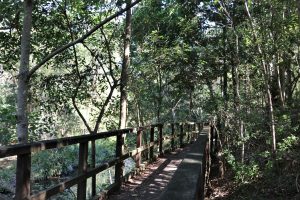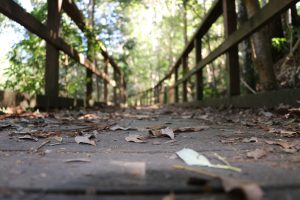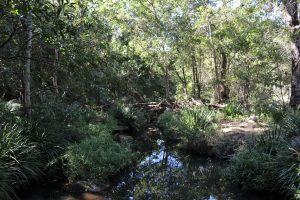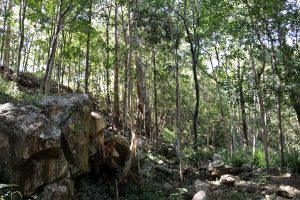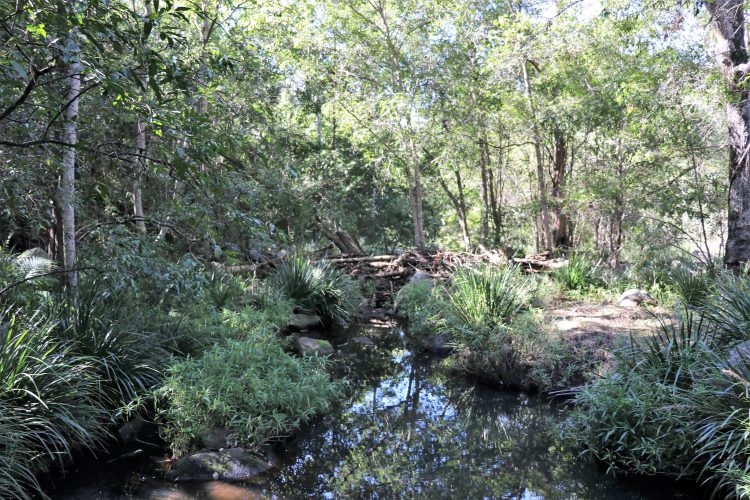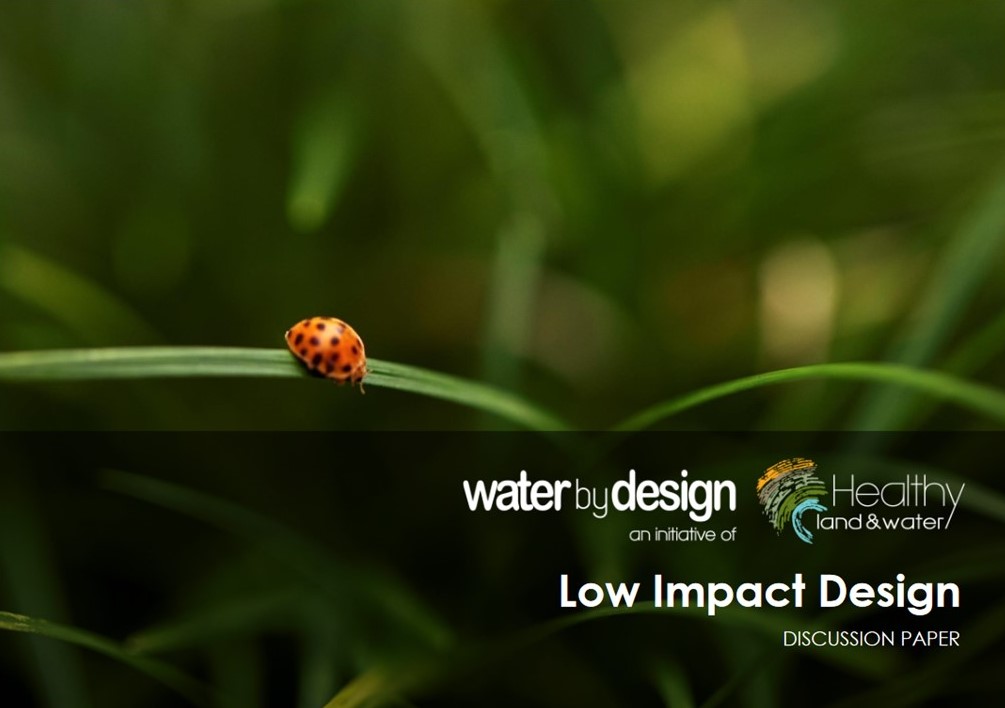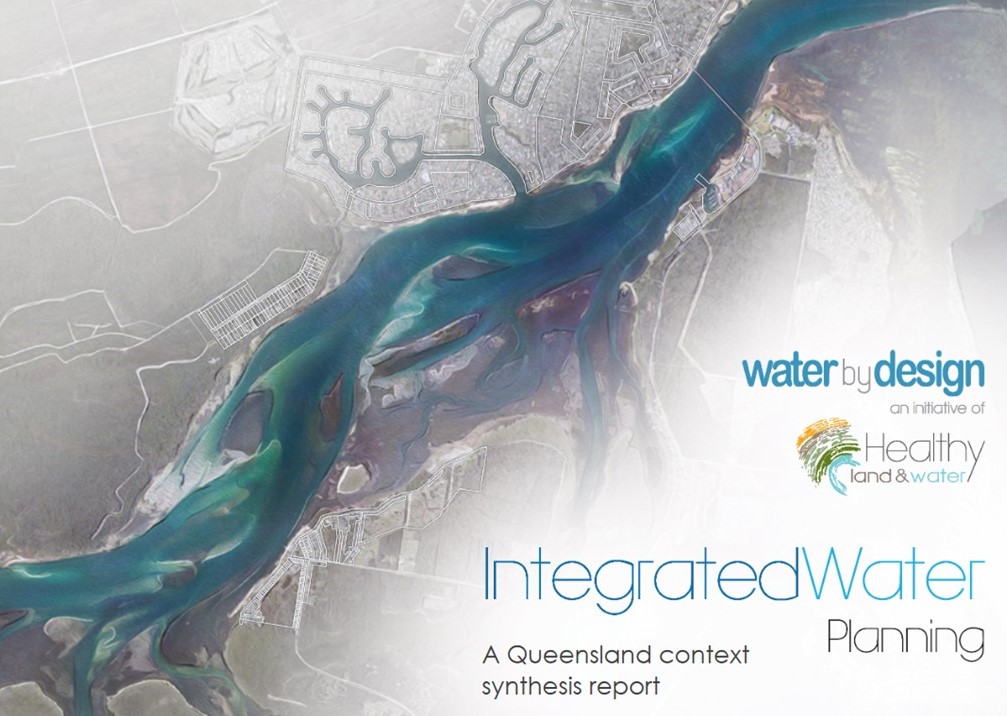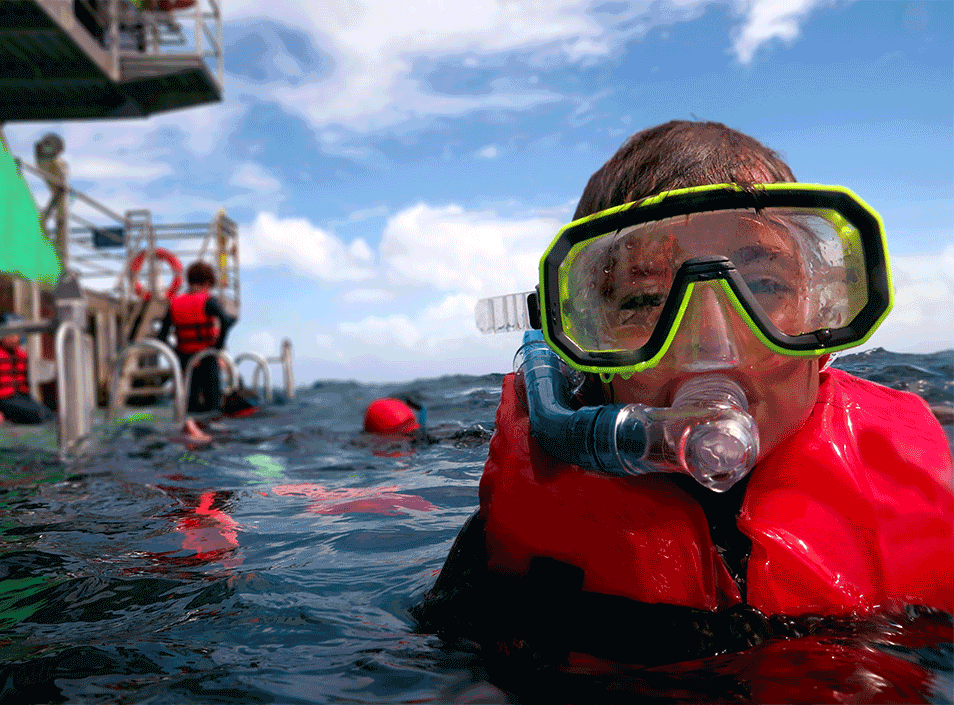Project summary
From 1996 to 2007, local resident Athol Brown, with assistance from various Green Corps groups, Work for the Dole volunteers and people completing community service, restored an 800m long stretch of Enoggera Ck. The restored area of creek stretches along Yoorala Street, from Elgata Street to Warana St. As a part of the restoration, enormous quantities of waste, including bricks, concrete, steel, car bodies and litter were removed from the creek, along with exotic weeds. The area was replanted and tended to as plants established. Today, to the untrained eye, this stretch of Enoggera Creek appears as if it is a natural, undisturbed waterway.
Project scale and objectives
Over 11 years, approximately 800m of waterway were progressively rehabilitated to a width of 30m or more. Beginning adjacent Elgata St, and working upstream, it is estimated that Athol alone invested 15,000 hours of his time in the site. A further 5,000 hours were contributed by other volunteers. Athol’s aim in undertaking the work was the restore the creek to as near to natural condition as feasible given the site’s history and ongoing pressures.
Site context
Enoggera Creek originates on the southern slopes of Mount Nebo, and flows east, through Enoggera Reservoir, to the Brisbane River. The headwaters, upstream of the reservoir, are largely undisturbed, while the area downstream is entirely urbanised, and the creek degraded. The project site is located less than 1km downstream of the reservoir.
Degradation began as the areas surrounding the site were developed in the 1960’s and 1970’s. In 1971, a sewer was laid along the creek itself. Construction of the sewer significantly damaged the creek. This damage, along with hydrologic changes, mean that many of the original geomorphic features no longer exist. The copious, apparently natural looking, angled boulders present today are the result of the sewer installation, where excavation was completed using dynamite. Damage continued throughout the 1980’s and 1990’s. In 1996, when works commenced, the creek was in effect a pest-ridden dump containing copious amounts of building materials and exotic weeds.
Issues and constraints
The overwhelming success of the restoration of the portion of Enoggera Creek adjacent to Yoorala Street is due almost entirely to the work of dedicated volunteers, however it was not without its challenges.
In 2008, the site was severely damaged when a microburst storm tore through the suburb of The Gap. Subsequent work repaired much of that damage, although its effects can still be seen in several large trees.
The site is an example of the difficulty faced when attempting to eliminate exotic aquatic weeds from waterways. While the riparian restoration has been largely successful, in patches it has proved exceptionally difficult to prevent aquatic weeds from re-emerging in the centreline of the creek.
Construction and ongoing costs
As the creek was primarily restored by volunteers, the cost of the project is unknown.
Lessons learned
The process taken to restore this portion of Enoggera Creek teaches several important lessons about creek restoration. The volunteers applied a staged approach to restore each section of the creek. First, rubbish and waste materials were removed. Next, weeds were sprayed or removed, and trees planted. Critically, these trees were allowed to establish before any understorey plants were installed. By allowing the canopy to establish, light was reduced and weed growth suppressed, although not eliminated. When it was time for the understorey to establish, it could do so in favourable conditions, with little competition from weeds.
The site demonstrates that even in well restored creeks weeds must be continually managed. Despite the success establishing a canopy on the site, weeds have re-emerged in certain areas. Athol describes how far fewer weeds were present on the site in 2007 than at present in 2017. Until 2007, Athol continued to manage weeds as they re-occurred.
Reference
Athol Brown – conversation on site 27 July 2017
http://www.saveourwaterwaysnow.com.au/
